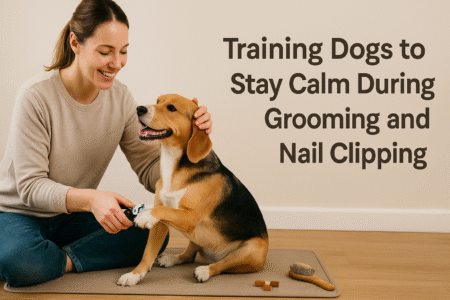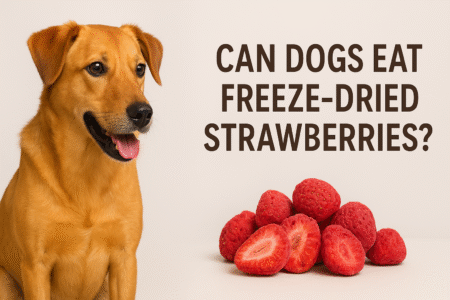How Often Should I Brush My Dog? This is one of the most common questions dog owners ask. Brushing your dog isn’t just about maintaining their appearance—it’s essential for their overall health and well-being. Regular grooming helps improve the condition of your dog’s coat, prevents skin problems, and can even strengthen the bond between you and your pet.
In this article, we’ll explore the key factors that influence how frequently you should groom your dog and provide a detailed guide to help you keep your furry friend happy, healthy, and well-groomed.
Understanding the Need for Regular Grooming
Brushing your dog regularly has multiple benefits, including maintaining a shiny coat, reducing shedding, and preventing skin irritation. Just like humans, dogs benefit from a clean and healthy coat. Brushing removes dirt, debris, and loose hair, while also stimulating the skin’s natural oils, promoting a healthy, glossy coat. But the key question is: How often should you be brushing your dog?
How Often Should I Brush My Dog? 4 Key Factors Every Pet Owner Must Know
Several factors play a role in determining the brushing frequency for your dog. Let’s explore these factors in detail.
Coat Type (Short Hair vs Long Hair)
One of the most significant factors influencing grooming frequency is your dog’s coat type. Dogs with short coats usually require less frequent brushing, while dogs with long or thick coats need to be brushed more often to prevent tangling and matting.
- Short-haired dogs: Breeds like Beagles, Boxers, and Dachshunds need brushing about once a week. Short hair tends to shed less and does not mat as easily as longer hair, but regular brushing can help remove loose hair and dirt.
- Long-haired dogs: Breeds such as Shih Tzus, Collies, and Yorkshire Terriers have coats that can easily become tangled. They should be brushed every day or at least several times a week to prevent mats and tangles from forming.
Dog’s Breed and Grooming Requirements

Different breeds have different grooming needs. While some dogs shed a lot, others shed very little. Some breeds have specific grooming needs, such as regular trimming, while others just need their coats brushed to maintain their health. Understanding your dog’s breed will give you a clear idea of how often they need to be brushed.
Age and Health of Your Dog
A dog’s age and health condition can also influence how often they need grooming. Older dogs or those with health conditions may not groom themselves as effectively. If your dog is a senior or has mobility issues, you might need to assist them more frequently with brushing.
Outdoor Activity Levels and Coat Conditions
Dogs that spend a lot of time outdoors or in the mud may need more frequent grooming, regardless of their coat length. Dirt and debris can get caught in their fur, leading to potential matting or skin irritation.
Types of Dog Coats and Their Grooming Needs
Understanding your dog’s coat type is essential to knowing how often you should brush them.
Short-haired Dogs: Grooming Frequency and Tips
Short-haired dogs may not need as frequent brushing, but it’s still essential for their overall health. Brushing once a week should suffice. Short-haired breeds like Bulldogs or Boxers don’t mat as easily, but they shed more frequently. Using a simple brush or rubber mitt can help manage shedding and keep their coat clean.
Long-haired Dogs: How Often to Brush and Why It’s Essential
Long-haired breeds like Shih Tzus or Afghan Hounds need daily grooming. Their coats tend to tangle and mat if not brushed regularly. Using a comb or slicker brush can help remove tangles and prevent mats, which can cause discomfort and skin irritation.
Curly and Wiry Coats: Unique Grooming Needs
Curly and wiry coats, like those of Poodles or Schnauzers, require special care. These dogs need regular brushing to prevent mats and tangles from forming. A pin brush or rake works best for curly coats, and you may need to trim the coat periodically to maintain its shape and health.
Effective Guidelines for Brushing Frequency
While each dog is unique, there are general guidelines to follow when determining how often to brush your dog.
Ideal Brushing Schedule for Different Breeds
- Daily brushing: Long-haired dogs, Poodles, Yorkshire Terriers, and other high-maintenance breeds.
- 3-4 times a week: Medium-length coats, like those of Beagles or Cocker Spaniels.
- Once a week: Short-haired breeds, such as Beagles or Bulldogs.
How to Assess Your Dog’s Grooming Needs Based on Lifestyle and Coat Condition
If your dog is more active or outdoors frequently, brushing may need to happen more often to remove dirt and prevent mats. Similarly, dogs with shedding problems may benefit from more frequent grooming.
Grooming Tools for Brushing Dogs

The right grooming tools can make all the difference in your dog’s brushing experience. Choosing a suitable brush for your dog’s coat type is essential to ensure effective grooming.
- Slicker brushes: Great for detangling long or curly coats.
- Pin brushes: Effective for thick, dense coats.
- Bristle brushes: Ideal for short-haired dogs to remove dirt and loose hair.
- Rakes and combs: Help remove mats and tangles in long or curly coats.
Benefits of Regular Brushing
Regular brushing provides numerous benefits for your dog:
- Prevents matting and tangling: Brushing keeps their coat free from tangles that could cause discomfort.
- Reduces shedding: Regular grooming reduces the amount of hair left behind in your home.
- Promotes healthy skin and coat: Brushing stimulates blood circulation and helps distribute natural oils, which promote healthy skin.
- Strengthens your bond with your dog: Grooming is a great opportunity for bonding, helping you connect with your dog.
How to Brush Your Dog Correctly
Brushing your dog correctly is important to avoid hurting them or causing discomfort. Here’s a step-by-step guide to brushing your dog:
- Start with a brush suited to your dog’s coat type.
- Brush gently, using long strokes.
- Pay attention to sensitive areas, like ears, face, and paws.
- Check for mats and tangles as you go, and gently work through them.
Common Mistakes to Avoid
Here are a few common grooming mistakes to avoid:
- Over-brushing: While brushing is essential, overdoing it can lead to skin irritation.
- Using the wrong brush: Be sure to use the appropriate tool for your dog’s coat.
- Brushing too roughly: Always be gentle to prevent discomfort or skin damage.
Signs Your Dog Needs Brushing
Some signs that your dog needs more frequent brushing include:
- Matted or tangled fur.
- Excessive shedding.
- Dull or greasy coat.
Brushing Tips for Puppies and Senior Dogs
Puppies have delicate coats that require gentle brushing, while senior dogs may need more attention due to changes in their coat or health. Tailor your brushing routine based on their needs.
Brushing in Different Seasons
Seasonal shedding requires adjusting your grooming schedule. During shedding seasons, more frequent brushing is needed to keep your dog comfortable and reduce hair buildup in your home.
Professional Grooming vs. At-Home Brushing
While at-home brushing is essential, some dogs may need professional grooming, especially for intricate cuts or trims. Regular professional grooming can complement your at-home brushing routine.
Conclusion:
Brushing your dog is more than just a beauty routine; it’s an essential part of maintaining their health and well-being. Understanding your dog’s coat type, health, and lifestyle will help you determine how often to brush them. With the right tools and techniques, regular grooming can keep your dog looking and feeling great.
Sure! Here’s an expanded FAQ section with 20 frequently asked questions related to brushing your dog.
Frequently Asked Questions (FAQs)
- How often should I brush my dog if they have short hair?
- Short-haired dogs should be brushed at least once a week to remove loose hair and dirt.
- Can I brush my dog too much?
- Yes, over-brushing can cause skin irritation. It’s important to brush gently and not too frequently for the breed.
- What brush should I use for a long-haired dog?
- Use a slicker brush or a pin brush for long-haired dogs to remove tangles and mats.
- How do I know if my dog needs professional grooming?
- If your dog’s coat is severely matted, tangled, or requires a trim, professional grooming may be necessary.
- Is brushing enough, or does my dog need a bath?
- Brushing removes dirt and debris, but regular baths are also important for maintaining your dog’s overall cleanliness.
- Can brushing my dog help with shedding?
- Yes, regular brushing helps reduce shedding by removing loose hair from your dog’s coat.
- How can I prevent mats in my dog’s fur?
- Regular brushing is the best way to prevent mats. For long-haired dogs, brushing every day is crucial.
- Why does my dog shed so much, and can brushing help reduce it?
- Some breeds shed more than others, especially during shedding season. Regular brushing can help reduce the amount of hair your dog sheds by removing loose fur.
- How do I brush my dog if they don’t like it?
- Start slowly and use positive reinforcement. Try to make the experience enjoyable with treats and praise. You can also try brushing for short periods and gradually increase the time.
- Is it necessary to brush my dog every day?
- It depends on the breed and coat type. Long-haired dogs often require daily brushing, while short-haired breeds may only need weekly grooming.
- Can brushing my dog’s teeth cause discomfort?
- Brushing your dog’s teeth should be done with special canine toothpaste and a soft brush, and it should not cause discomfort if done gently.
- Can I brush my dog while they are wet?
- It’s generally best to brush your dog’s coat when it’s dry, especially for long-haired breeds, to avoid damaging the hair. However, some dogs may benefit from brushing after a bath to remove tangles while their coat is damp.
- What should I do if I find a mat in my dog’s fur?
- Gently work the mat out with a comb or brush. If it’s too tight or painful, seek professional help from a groomer to prevent injury.
- What are the signs that I need to brush my dog more often?
- If your dog’s coat is becoming tangled or matted, or if they seem to have more loose hair than usual, you may need to increase the frequency of brushing.
- Can brushing my dog make their coat shinier?
- Yes, brushing helps distribute natural oils throughout the coat, which can make it look healthier and shinier.
- Should I brush my dog before or after a bath?
- It’s usually best to brush your dog before a bath to remove tangles and mats. However, brushing them after a bath while their coat is damp can help remove any remaining loose hair.
- How can I keep my dog calm during grooming?
- Use calm, soothing words and take breaks during the grooming process. Short and frequent sessions can help your dog get used to the process.
- Is it okay to trim my dog’s coat at home?
- It’s okay for small trims, but if you’re unsure about the proper technique, it’s best to leave significant trimming to a professional groomer.
- What do I do if my dog’s skin gets irritated from brushing?
- If your dog’s skin gets irritated, stop brushing and check for any cuts, wounds, or signs of infection. You may want to switch to a gentler brush or consult your vet if the irritation persists.
- Are there any dog breeds that don’t need regular brushing?
- Some breeds with hair instead of fur, like Poodles, don’t shed much and may require regular grooming to avoid matting, but they typically don’t require frequent brushing for shedding purposes. However, every dog benefits from regular grooming.




















Leave a Reply